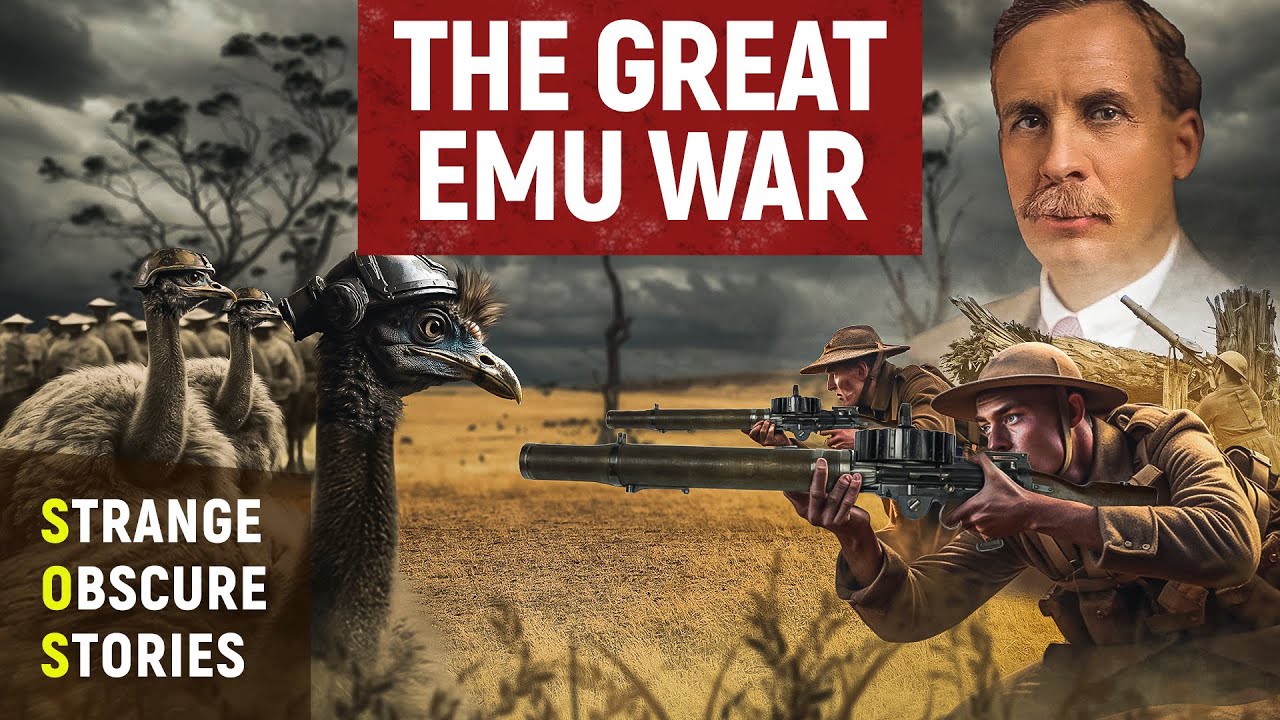Today, we travel back to the arid Australian Outback, where a bizarre and unforgettable event occurred. In 1932, Western Australia was already reeling under the impact of the Great Depression and an unrelenting drought. But little did the farmers know that they were about to face an unexpected and unprecedented challenge – an invasion of emus. Yes, you heard that right, emus!
Nearly 20,000 of these large flightless birds descended upon the wheat farms of Campion, wreaking havoc and leaving a strange mark in the history books. This article will delve into what became known as the Great Emu War, a skirmish between man and bird that would forever be etched in the annals of Australian history.
The Emu Invasion
The emus were attracted to the cultivated land of the farmers because it provided them with ample food and water, making it an ideal place for them to survive and raise their families. However, their presence posed a significant threat to the farmers’ livelihoods. These feathery foragers consumed and trampled crops, causing extensive damage to the region’s agriculture. Additionally, their presence allowed rabbits to enter the farms, further exacerbating the problem.
In the face of this mounting crisis, the farmers turned to the Australian government for assistance. There were growing calls for immediate action, with some farmers even suggesting that they should take matters into their own hands. However, the government recognized the severity of the situation and decided to intervene.
The Military Intervention
The government turned to the military for help, deploying soldiers armed with Lewis guns to combat the emu incursion. The Minister of Defence, Sir George Pearce, even called it an “operation against the emus.” However, there were certain conditions for this military intervention. Only military personnel were allowed to handle the guns and ammunition, while the government of Western Australia would finance the troop transport. Conversely, the farmers would provide food and accommodations for the soldiers and pay for the ammunition.
To document this unusual event, the government even hired a cinematographer from Fox Movietone to film the war with the emus. Major GPW Meredith of the 7th Heavy Battery of the Royal Australian Artillery was appointed to lead the endeavor to quell the emu population.
The Battle Begins
The battle that unfolded was far from straightforward. The emus proved to be surprisingly resilient and posed a formidable adversary. Their speed, agility, and overwhelming numbers made it difficult for the soldiers to gain the upper hand. They could run up to 50 kilometers per hour, quickly disperse, and regroup. One army observer noted, “Each pack seems to have its own leader now. A big black plumed bird which stands fully six feet high and keeps watch while his mates carry out their work of destruction and warn them of our approach.”
Despite the soldiers’ efforts, the war with the emus raged on for close to six weeks. However, much to their chagrin and the public’s amusement, the results of the military campaign were unimpressive. After several weeks and thousands of rounds of ammunition, only several hundred emus had been culled. It was a minor dent in the vast and harrowing horde of emus.
Major Meredith of the Royal Australian Artillery’s 7th Heavy Battery expressed his astonishment at the emus’ resilience, stating, “If we had a military division with the bullet-carrying capacity of these birds, it would face any army in the world. They can face machine guns with the invulnerability of tanks.”
The End of the War
Under increasing public scrutiny and media ridicule, the government withdrew military assistance. The emus had miraculously triumphed in the Great Emu War. However, the story doesn’t end there.
James Mitchell, the Premier of Western Australia, mounted a second effort to control the emu population. This time, the campaign was more successful, resulting in the killing of thousands more birds. Eventually, in December of 1932, the army withdrew from the battle.
Today and Lessons Learned
Today, emu populations are managed through more peaceful methods, such as fencing, alarm systems, and resource management. The Great Emu War has become a peculiar footnote in history, but it serves as a reminder to respect and acknowledge the intricate balance of our shared world.

Leave a Reply